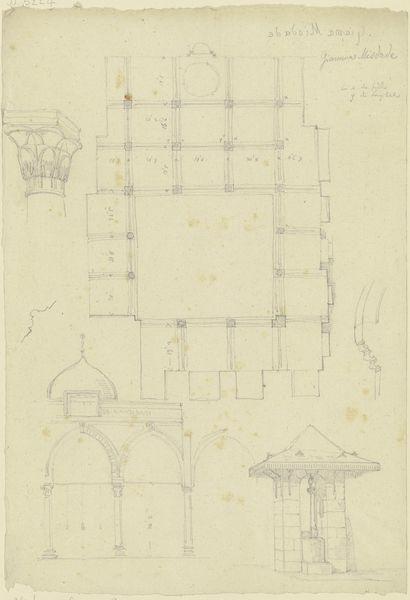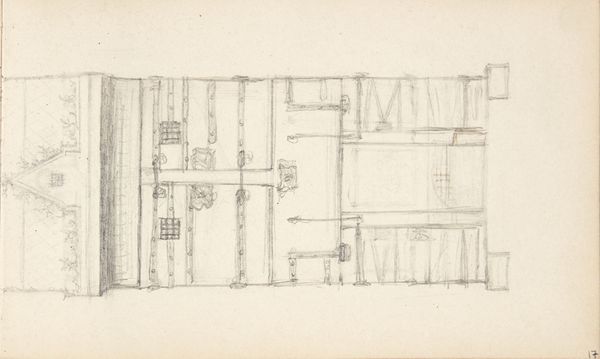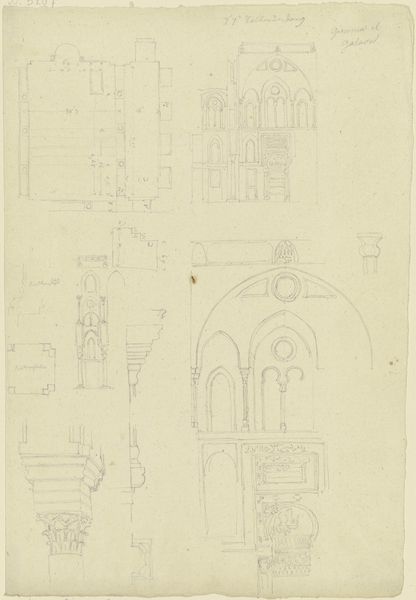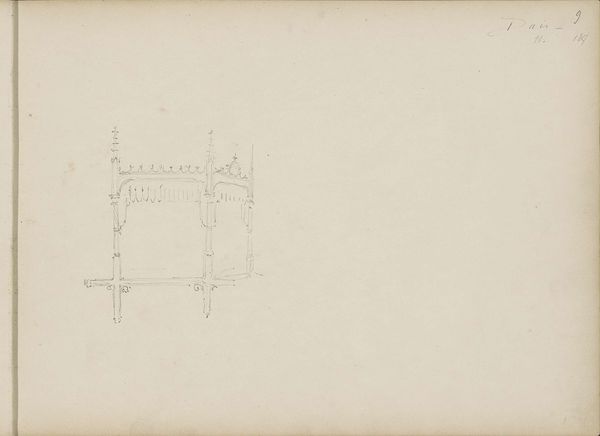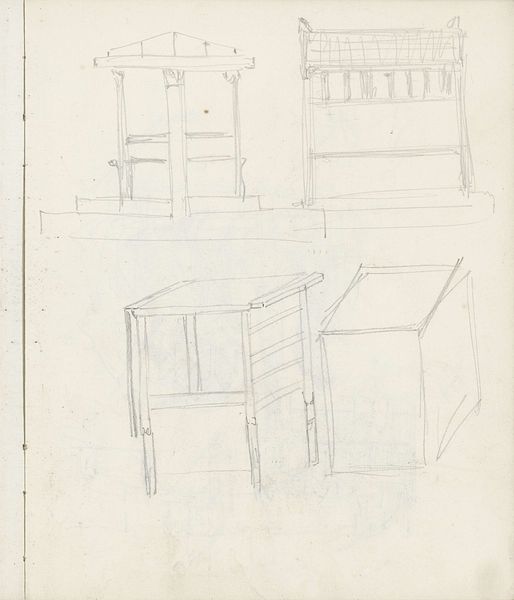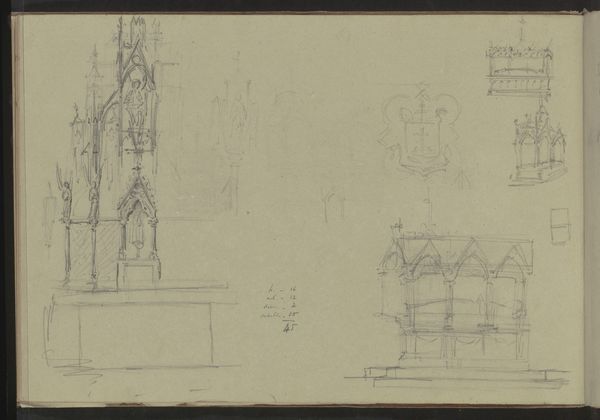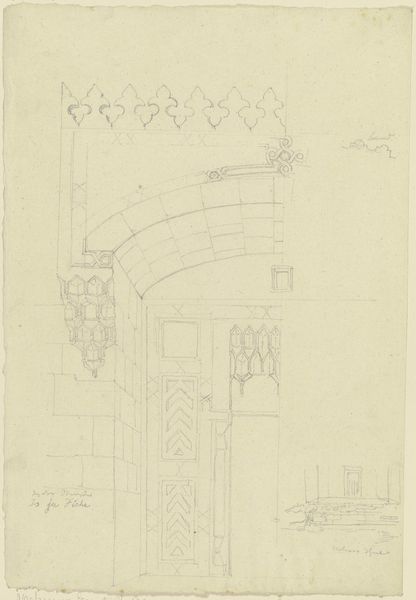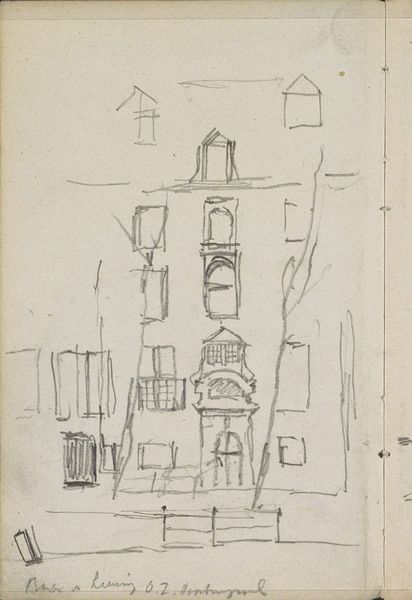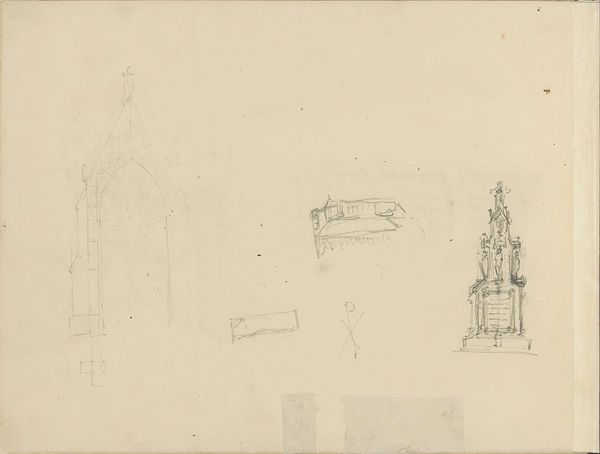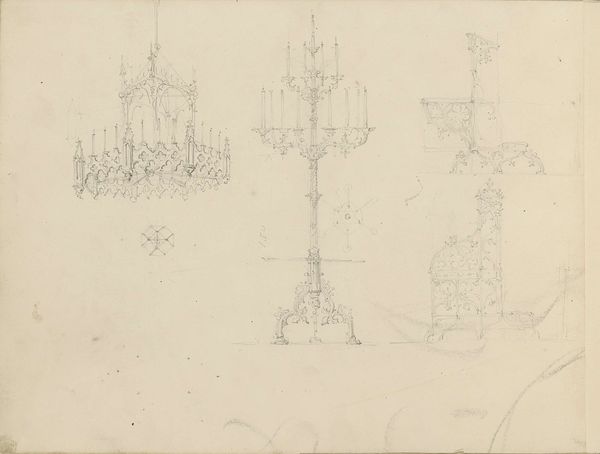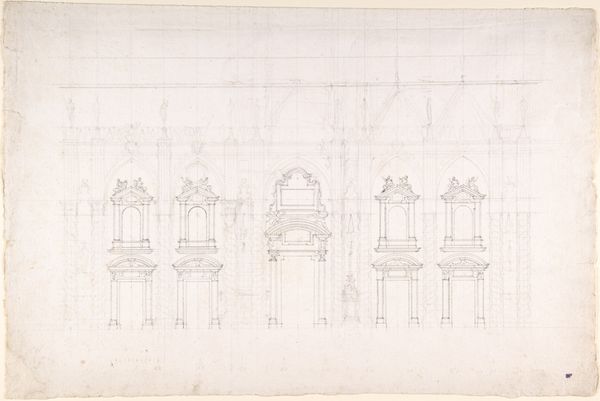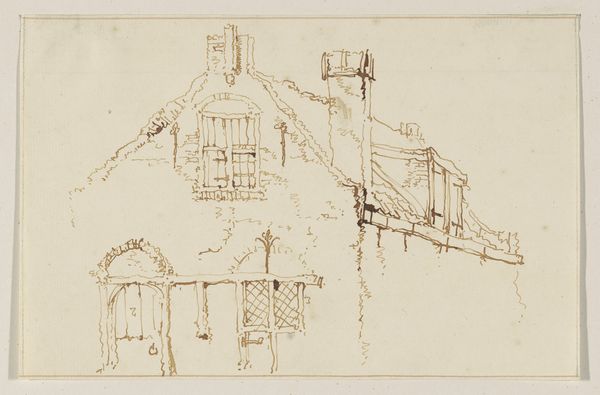
Opstalter af smalt bindingsværkshus eller resalit i flere stokværk 1897 - 1898
0:00
0:00
drawing, paper, pencil, architecture
#
drawing
#
paper
#
geometric
#
pencil
#
line
#
architecture
#
realism
Dimensions: 121 mm (height) x 207 mm (width) x 90 mm (depth) (monteringsmaal), 126 mm (height) x 207 mm (width) (bladmaal)
Curator: Welcome. We’re standing before "Opstalter af smalt bindingsværkshus eller resalit i flere stokværk," which translates to something like "Elevations of a narrow timber-framed house or projecting structure in several stories." It’s a pencil drawing on paper by Agnes Slott-Møller, dating back to between 1897 and 1898. Art Historian: It strikes me as a surprisingly detailed architectural sketch for something so seemingly simple. The artist is clearly concerned with capturing the precise lines and structure of this building. It’s rather austere, wouldn’t you say? Curator: Austere, perhaps, but I see something more than just architectural precision. I'm immediately drawn to what the structure represents. What kind of lives are lived within those lines? We have to consider how these built spaces mediate experiences of gender and class. Art Historian: Precisely! These buildings weren’t simply neutral spaces. Slott-Møller, although better known for her paintings, provides here insight into the aesthetic values that shaped Danish society at the time. Curator: It is not simply aesthetic. Remember that in the late 19th century, urban planning and architecture were deeply tied to social engineering. Narrow houses like this can tell us something about access and inequality during this era. It is imperative that we interpret art like this through socio-political frameworks that account for disparities and struggles faced by marginalised individuals. The constraints of limited domestic spaces directly impacted women and working-class communities, and it’s vital we acknowledge such issues. Art Historian: Of course. By sketching these structures with such attention to detail, Slott-Møller highlights the physical reality, that shaped daily existence and, therefore, power relations in society. Architectural drawings like these act as historical records of human endeavours and social order. Curator: They reflect as well dominant narratives. Slott-Møller could have chosen many other subjects. Why focus on narrow timber-framed structures? We should discuss and deconstruct all existing cultural values within those structures and ask questions that amplify overlooked stories in relation to architectural space. Art Historian: An important consideration to always be considered indeed! Looking closer, it also appears there were at least two variations considered and a frontal rendering. A snapshot of a place caught in history! Curator: Well, thinking of urban spaces with different lenses always allows me to understand social relations a bit more thoroughly, don’t you think? Art Historian: I couldn’t agree more, I believe I’ll be using the frameworks you mentioned when I reflect on public spaces and what exists in our collection!
Comments
No comments
Be the first to comment and join the conversation on the ultimate creative platform.
